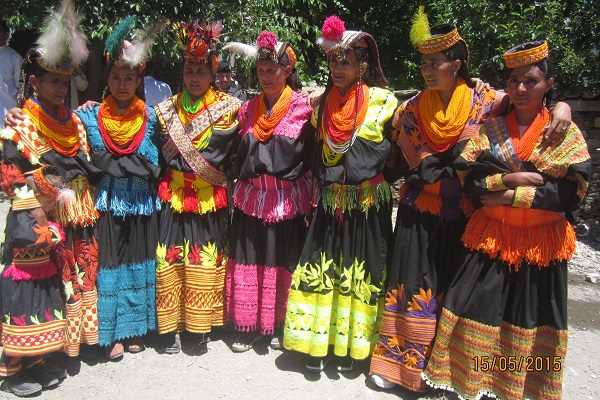C'ANJ'ARAT (20 December). The night of lit torches.
On 20 December the Kalasha men make the c'anj'a ‘huge torches, 3-10 meters high, made from a kind of pine wood, called cizhin mut. Long splinters of such wood cut down with an axe are tied with willow straps to form a c'anj'a.
Meanwhile back at home the women make a huge number of t'at'ori bread for one of their gods, Balimahin. During the c'anj'arat ceremony the Kalasha believe that Balimahin returns to Tsyam.
The procession of men and boys holding a lit c'anj'a, singing and dancing will start late at night. On their way another crowd of men from Darasguru and Anish villages join them all heading to Batrik village. There men only light a fire and pray to Balimahin asking for health and fecundity. Then the ritual of the new leader, the roy moc, follows. The old leader of all the villages of Bumburet valley will say to the new leader (chosen by all villages): Rohi may som ashis. ‘The responsibility (for the welfare of all the Kalasha) was mine’. Onja o tayuna aw. ‘But now it has come to you’.
At dawn all men and boys, holding one another from their waist, dance, chanting hu ha ha ha. Then they enjoy themselves singing and dancing the cutak ey frenzy dance around a huge fire.
The c'anj'arat ‘night of the lit torches’ ceremony with all the rituals, the chanting, the singing and mostly the wild dancing can be paralleled to the Dionysian rituals of Ancient Greece: “The Bacchic God … lifting high the blazing flame of the pine torch, sweet as the smoke of Syrian frankincense, lets it stream from his wand…”, Bacchae, Euripides, l. 44-151, in Dodds 1960: 87-88.




